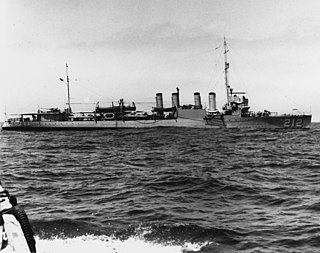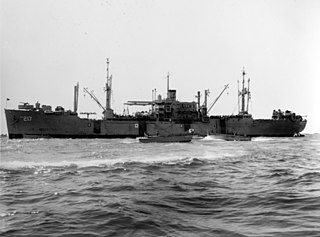
USS New Orleans was a United States Navy protected cruiser of the New Orleans class.

The first USS Newark (C-1) was a United States Navy protected cruiser, the eighth protected cruiser launched by the United States. In design, she succeeded the "ABC" cruisers Atlanta, Boston, and Chicago with better protection, higher speed, and a uniform 6-inch gun armament. Four additional protected cruisers were launched for the USN prior to Newark.

The third USS Charleston (C-22/CA-19) was a United States Navy St. Louis-class protected cruiser. She was launched 23 January 1904 by Newport News Shipbuilding and Dry Dock Co., Newport News, Virginia, sponsored by Miss Helen Whaley Rhett, and commissioned on 17 October 1905, Captain Cameron McRae Winslow in command. She was reclassified CA-19 on 17 July 1920.

USS New York (ACR-2/CA-2) was the second United States Navy armored cruiser so designated; the first was the ill-fated Maine, which was soon redesignated a second-class battleship. Due to the unusually protracted construction of Maine, New York was actually the first armored cruiser to enter U.S. Navy service. The fourth Navy ship to be named in honor of the state of New York, she was later renamed Saratoga and then Rochester. With six 8-inch guns, she was the most heavily armed cruiser in the US Navy when commissioned.

The third USS Albany was a United States Navy protected cruiser of the New Orleans class. She saw service in the Philippine–American War and World War I.

The fifth USS Boston was a protected cruiser and one of the first steel warships of the "New Navy" of the 1880s. In some references she is combined with Atlanta as the Atlanta class, in others as the Boston class.

The first USS South Dakota (ACR-9/CA-9), also referred to "Armored Cruiser No. 9", and later renamed Huron, was a United States Navy Pennsylvania-class armored cruiser.

The fifth USS Truxtun (DLGN-35/CGN-35) was a nuclear powered cruiser in the U.S. Navy. She was launched as a destroyer leader and later reclassified as a cruiser. She was named after Commodore Thomas Truxtun (1755–1822). She was in service from May 1967 to September 1995.

USS Arkansas (CGN-41) was a Virginia-class nuclear-propelled guided-missile cruiser of the U.S. Navy. She was in commission from October 1980 through July 1998. Her primary missions were in defending aircraft carrier task forces in air defense (AAW) and antisubmarine warfare (ASW) by using her guided missiles, radar systems, and sonar systems. Since Arkansas had the high speed and unlimited range provided by her nuclear reactors, she usually escorted the nuclear-powered aircraft carriers of the U.S. Navy.

USS Raleigh (C-8) was a United States Navy protected cruiser of the Cincinnati class, commissioned in 1894 and in periodic service until 1919.

USS Rainbow (AS-7) was the only ship in the United States Navy by that name. The ship was originally converted to a distilling ship in 1898, and then converted again in 1917 to a submarine tender.

USS Galveston (C-17/PG-31/CL-19) was a Denver-class protected cruiser in the United States Navy during World War I. She was the first Navy ship named for the city of Galveston, Texas.

USS Smith Thompson (DD-212) was a Clemson-class destroyer in service with the United States Navy from 1919 to 1936. She was intentionally sunk following a collision with USS Whipple (DD-217), in July 1936.

USS Pampanga (PG-39) was a schooner-rigged iron gunboat in the United States Navy during the Philippine–American War. She retained her Spanish name.

The second USS Milwaukee (C-21) was a St. Louis-class protected cruiser in the United States Navy. Entering service in 1906, Milwaukee was deployed to the Pacific Ocean. On 13 January 1917, while aiding a grounded submarine, the cruiser grounded herself. The ship was decommissioned and sold for scrap in 1919.

The second USS Monterey was the sole Monterey-class monitor. Laid down by Union Iron Works, San Francisco, California, 20 December 1889, she was launched 28 April 1891, sponsored by Miss Kate C. Gunn. She was commissioned 13 February 1893.

USS Rail (AM-26/AT-139/ATO-139) was a Lapwing-class minesweeper built for the United States Navy during World War I. She was the first U.S. Navy ship named for the rail, a small wading bird, related to the cranes.

USS New Kent (APA-217) was a Haskell-class attack transport in service with the United States Navy from 1944 to 1949 and from 1951 to 1954. She was scrapped in 1972.

USS Goss (DE-444) was a John C. Butler-class destroyer escort in service with the United States Navy from 1944 to 1946 and from 1951 to 1958. She was scrapped in 1972.

USS Loeser was a Buckley-class destroyer escort of the United States Navy, named in honor of Lieutenant Commander Arthur E. Loeser (1903–1942).






















